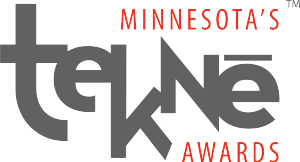
2024 MNIT Annual Report
2024 at a glance
In 2024, we continued to deliver innovative solutions and drive progress for our agency partners and the people of Minnesota. Key achievements include:
- Received “A” grade for the use of digital technology from the Center of Digital Government.
- Launched the Department of Children, Youth, and Family in July.
- Funded 26 projects across state agencies through the Technology Modernization Fund to enhance security, improve technology systems, and elevate the customer experience.
- Implemented Minnesota’s new cybersecurity incident reporting law requiring state agencies to promptly report cybersecurity incidents, strengthening the state’s ability to respond to and mitigate threats.
- Hired the state’s first AI director to help lead the state’s adoption of responsible AI use.
- Accelerated the transition to a product-centric model by adopting agile methodologies, prioritizing customer experience, and establishing new strategies for efficient, people-focused government through the Product & Agile Center of Enablement.
- Updated the State of Minnesota’s digital accessibility standards to support the new Web Content Accessibility Guidelines (WCAG) 2.1.
- Awarded over $9 million in grants to restore Minnesota’s Public Land Survey System.
- Developed an action plan that outlines how Minnesota will mitigate the most significant cybersecurity vulnerabilities in the state’s water and wastewater systems (WWS).
FY24 Strategic Plan report: objectives in action
In FY24, MNIT made great strides towards achieving the goals set in the 2023-2027 Strategic Plan. From improving how we deliver services to enhancing cybersecurity, an overview of our accomplishments show real progress in making Minnesota’s technology work better for everyone.
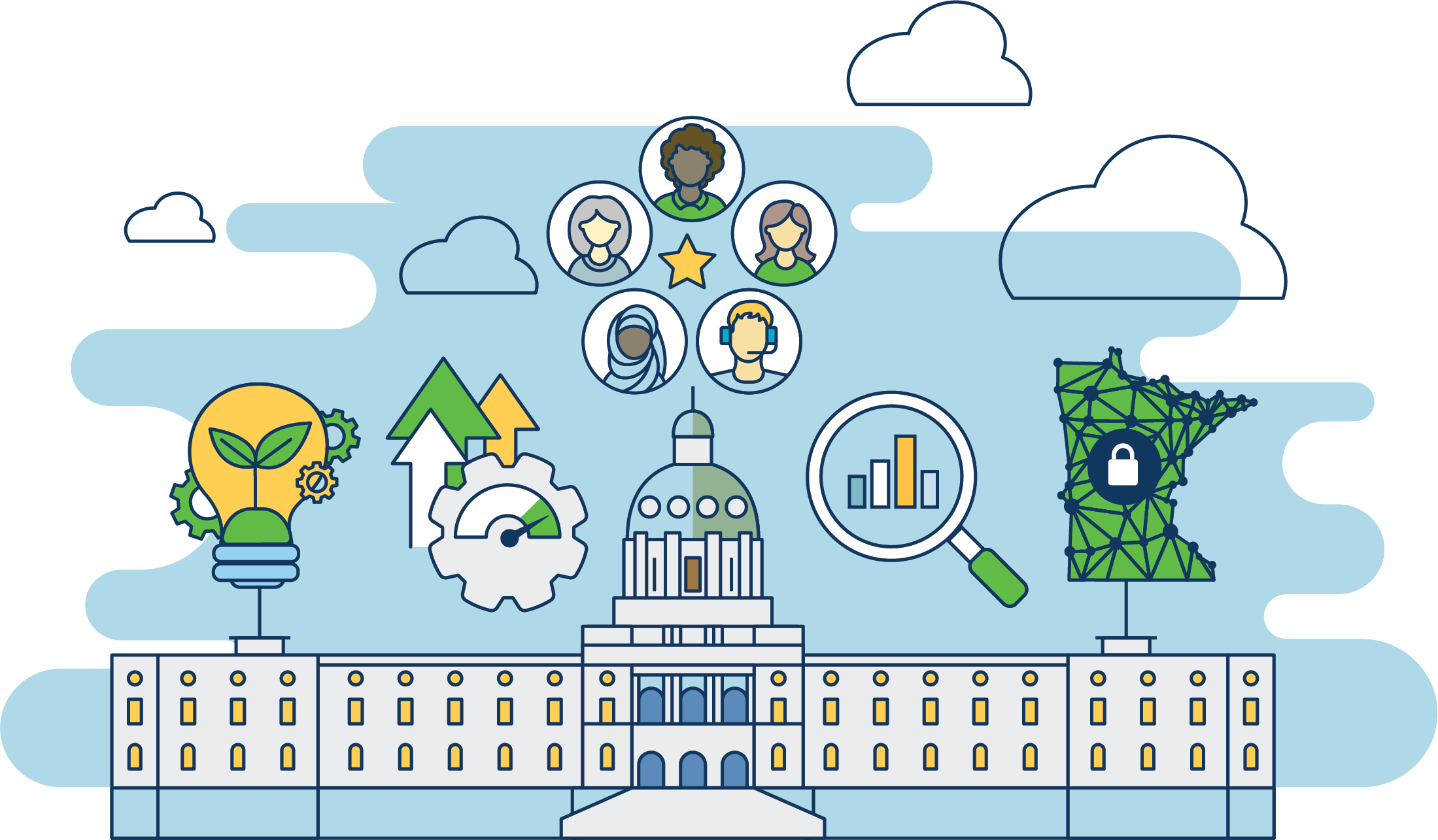
Customer experience

Strategic Objective 1: Embrace a people-centric product model
Human-centered design enhances customer experience
MNIT’s Human-Centered Design Community of Practice expanded its focus to integrate customer experience (CX) principles into its guidance and resources. This initiative supports adopting design thinking across technology disciplines, aligning with agile and product methodologies. The group published “Customer Experience 101,” equipping state employees with tools to adopt human-centered approaches and advance the goals of the One Minnesota Plan.
PACE early adopters program launched
The Product and Agile Center of Enablement (PACE) completed its first year of coaching cohorts and launched an early adopters program. Participating agencies implemented industry-standard product management practices, enabling more frequent and customer-informed technology updates. This iterative approach reduces delays and delivers value to Minnesotans faster.
Strategic Objective 2: Create modern digital experiences
40 x 2027: transforming digital services
The State of Minnesota’s goal to implement 40 enhanced self-service digital capabilities by 2027 is off to a strong start. The initiative debuted at the inaugural CX Summit in August 2023 and continues to identify opportunities through the executive branch technology project portfolio, Technology Modernization Fund (TMF), and an employee idea campaign.
- TMF awards: 13 of 17 funded projects will improve customer experience, directly contributing to the 40 x 2027 target.
- Employee idea campaign: Over 300 innovative ideas from state employees included suggestions for leveraging AI, improving web accessibility, and streamlining service delivery.
Digital accessibility advances
The Office of Accessibility updated Minnesota’s Digital Accessibility Standard to align with WCAG 2.1. This update, developed with extensive outreach and volunteer contributions, ensures inclusive digital experiences for all users.


Strategic Objective 3: Maximize the value of data
Geospatial Advisory Council sets priorities
The Minnesota Geospatial Advisory Council (GAC) identified six priorities for 2024, ensuring statewide collaboration among a diverse range of geospatial technology users, including tribal governments, local agencies, and businesses.
Data-driven road safety improvements
Through TMF funding, the Department of Public Safety launched a Data and Analytics Center and an enhanced crash reporting system. These tools utilize AI and machine learning to support the Toward Zero Deaths initiative, offering better data integration and analysis to improve road safety for all Minnesotans.
Cybersecurity & Operational Excellence
Strategic Objective 4: Evolve process, application, and service life cycles
AI services security standard published
MNIT introduced the state’s first Public Artificial Intelligence Services Security Standard in 2023, applicable to all executive branch employees. This foundational policy guides the responsible use of AI while protecting sensitive data.
Portfolio management tool implementation
MNIT began deploying a strategic portfolio management tool across executive branch agencies. By the end of 2024, this tool, now being used by over 2,600 employees, tracked nearly 1,400 projects, improving visibility, accountability, and alignment with the Governor’s One Minnesota Plan.


Strategic Objective 5: Mature operations to deliver consistently and efficiently
CloudRAMP accelerates cloud transition
With $33 million in funding, MNIT made significant progress migrating applications and infrastructure to the cloud. By year-end, over 1,500 servers and 250 applications operated in Azure, enhancing scalability and efficiency.
Service catalog launched
A new enterprise service catalog gives MNIT’s partners accessible, clear descriptions of available services. Developed using human-centered design principles, the catalog enhances transparency and supports better service delivery.
Strategic Objective 6: Bolster whole-of-state cybersecurity and service continuity
Whole-of-state cybersecurity plan takes shape
With $23 million in funding, MNIT and the Minnesota Cybersecurity Task Force launched a plan to bolster defenses for 3,500 local entities, including Tribal Nations, schools, cities, and critical infrastructure. Key initiatives include cyber incident reporting, enhancements to the Minnesota Network for Enterprise Telecommunications (MNET) and advancing cybersecurity practices.
Login.mn.gov development
MNIT is improving access to state services with Login.mn.gov, a user-friendly identity management system inspired by the federal login.gov. This system simplifies secure access while protecting sensitive data.
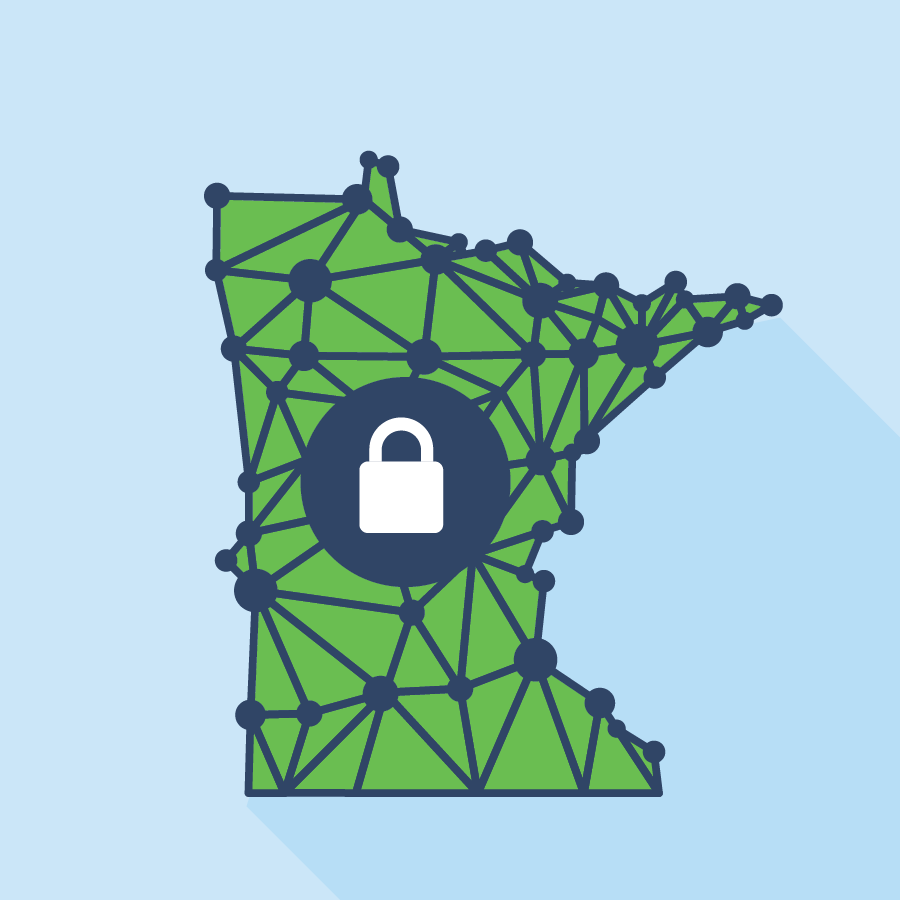
Connected Culture

Strategic Objective 7: Embrace change, innovation, and agility
Relocation to the Stassen Building
MNIT staff transitioned to a new workplace in the Stassen Building, designed to support hybrid work models and foster collaboration. This move reflects MNIT’s commitment to creating dynamic, inclusive workspaces.
TAIGA established
The Transparent Artificial Intelligence Governance Alliance (TAIGA) prepares state agencies for AI’s transformative potential while ensuring equitable and responsible implementation.
Strategic Objective 8: Foster equity, inclusion, and engagement
Green Team drives sustainability
The MNIT Green Team initiated efforts to meet state environmental goals, such as reducing greenhouse gas emissions and energy consumption. This collaborative group invites all employees to contribute to sustainability initiatives.
Inclusive hiring and reporting
MNIT actively attracts and retains talented individuals from diverse backgrounds through intentional hiring practices. The agency prioritizes accessibility, equity, and outreach to underrepresented communities, creating opportunities for all candidates to contribute to innovative IT solutions that benefit Minnesotans. Key strategies include targeted recruitment, bias-reducing interview processes, and fostering employee growth and belonging. MNIT also tracks and reports retention rates to ensure its workforce reflects the communities it serves.


Strategic Objective 9: Develop and Support High Performing Teams
Leadership core competencies defined
MNIT developed a leadership framework to guide training, recruitment, and performance management. With six core competencies identified, this initiative equips leaders to navigate challenges in a hybrid, tech-driven workplace that fosters a culture of trust.
Transformation
Enhancing services for Minnesotans, businesses, and visitors
MNIT’s transformation efforts improve the way we deliver public services, making them more efficient, accessible, and responsive to the needs of the people and organizations we serve. From streamlined processes and modern infrastructure to innovative solutions, these initiatives aim to deliver meaningful benefits to communities across the state.
Want to find more about MNIT's digital transformation efforts?
New funding to deliver on and improve technology
Building on efforts to improve CX, Minnesota is transforming how government delivers digital services. Recognizing the need for accessible, equitable, and secure solutions, the Minnesota Legislature allocated $40 million over four years to the Technology Modernization Fund (TMF) in 2023. This investment allows MNIT to lead modernization projects that enhance security and elevate the CX of executive branch technology systems, ensuring Minnesotans can access the services they need anytime, anywhere.
How TMF works
The Modernization Steering Team, composed of MNIT leaders and agency partners, oversees the fund, recommending and monitoring project proposals. Approved projects align with state priorities and deliver meaningful results for Minnesotans.
TMF-funded projects will be highlighted throughout the report.
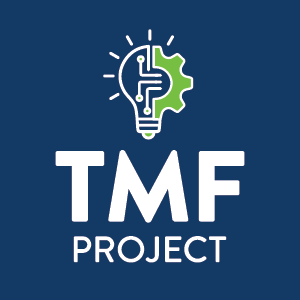
Future-proofing Minnesota’s technology with CloudRAMP
While exploring options to renew a data center lease and licenses for our current on-premises virtual hosting environment, we discovered that both options would raise costs for our agency partners. To address this, MNIT is undertaking multiple projects to migrate most agency data and applications to the cloud. For systems that must remain on-premises, they will be moved to a new virtualized hosting environment. These efforts will allow MNIT to close one data center and retire the existing virtualized hosting environment.
By using the existing CloudRAMP framework, we have accelerated this process and taken advantage of immediate savings to run workloads in the cloud. Acting now can strengthen Minnesota’s financial, security, and resiliency posture, creating a win-win for the state and its agencies.
What we accomplished in 2024
This year, 18 new agencies and their MNIT teams actively engaged in migrations. We increased efforts with our primary cloud migration partner and with MNIT application and infrastructure teams that are moving workloads on their own.
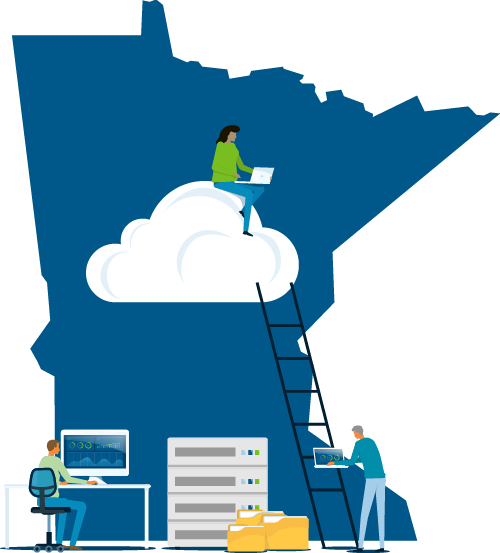
Next steps
Our strategic approach is to migrate first, then modernize as necessary in the cloud because:
- We need the resilience, security, and other opportunities that the public cloud provides now.
- We want to reduce our capital expenses including data center and hardware costs. The longer migrations take, the more expensive it becomes.

Revamped public safety website improves access and usability
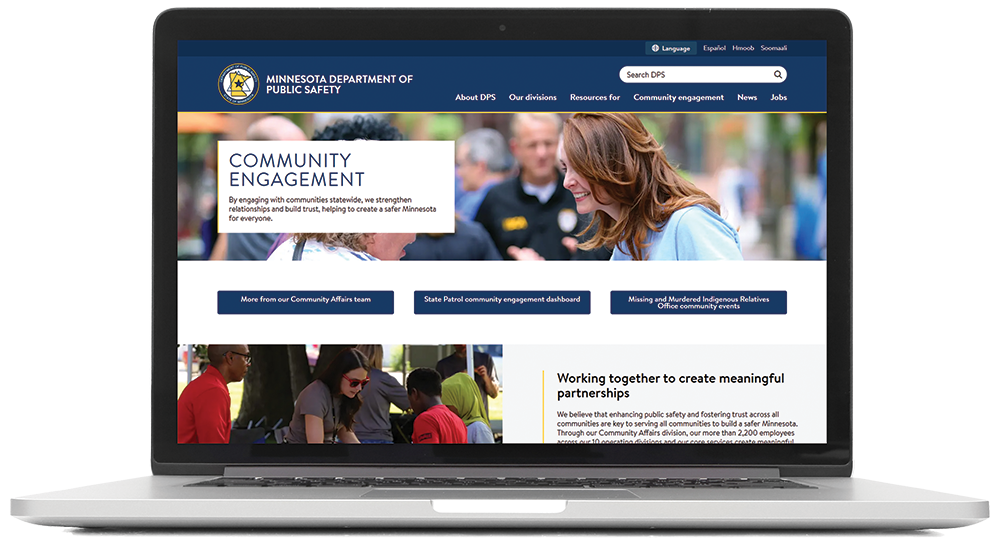
The Minnesota Department of Public Safety (DPS) oversees multiple offices, making its website a key resource for essential information. However, the website had not been updated since 2011. To address this, DPS partnered with MNIT and used the Technology Modernization Fund (TMF) to revamp the site, transforming it into a mobile-friendly, accessible, and user-centered platform with enhanced search capabilities.
Launched in November 2024, the redesigned website provides Minnesotans with easy access to essential services and crucial public safety information. From driver’s licenses and firearms permits to public records, crash reports, and crime statistics, the site connects users with the resources they need. Expanded content also provides information and support on initiatives such as the Missing and Murdered Black Women and Girls Office, Community Affairs, Tribal Relations, and the Office of State Safety Oversight.
The team used a data-driven approach to develop the site, incorporating feedback from users and all DPS divisions. This ensured improved usability for both internal and external users. MNIT also prioritized the site’s security and reliability.
DPS measures performance by monitoring page views, user success rates, time spent on pages, and support call volume. A post-launch survey will gather user feedback to guide future improvements, ensuring the site continues to meet people’s needs.

Simplifying health coverage information
Starting in 2025, Minnesotans will have an easier way to explore health insurance options and financial help through MNsure’s new Easy Enrollment program. Many uninsured Minnesotans don’t know that financial assistance is available for medical insurance. Easy Enrollment aims to connect people with clear information about their health coverage options. By simply checking a box on their Minnesota individual income tax form (Form M1), uninsured residents can request a personalized outreach letter detailing coverage options and eligibility for financial assistance.
This initiative is a collaboration between MNsure and the Minnesota Department of Revenue, with funding through the TMF. A new automated system will remove the complication of manual information management and protect sensitive information. When a person checks the box on the tax form, the system will use secure data connections to generate and mail letters to individuals about resources such as no- or low-cost coverage through Medical Assistance and MinnesotaCare, as well as tax credits for private plans.
Easy Enrollment doesn’t just simplify access to health coverage, it also contributes to lowering Minnesota’s uninsured rate. It is estimated the project will receive up to 60,000 requests annually. Automating the outreach process speeds up eligibility decisions, reduces risks tied to human error, and ensures accuracy. This innovative program prioritizes security, convenience, and affordability, to help more Minnesotans take the first step toward better health
Improving customer service with e-Services for individuals
The Minnesota Department of Revenue has significantly enhanced customer service by introducing the e-Services for Individuals platform. Designed to streamline interactions, this online system empowers taxpayers to easily manage their accounts. Features include viewing account balances, making secure payments, checking payment history, and accessing letters from the department. These tools reduce barriers and simplify the tax compliance process for Minnesotans.
This advancement reflects the department's commitment to addressing long-standing customer needs. MNIT played a crucial role in the successful rollout of this service, employing an agile, iterative approach to development. Director of Tax System Planning Nicholas Eull praised MNIT's efforts, emphasizing that this collaborative and responsive strategy was key to delivering a modernized experience. By focusing on taxpayer convenience, the department made meaningful progress in improving how Minnesotans interact with government services.
Reducing language barriers with innovative translation initiative
Minnesotans can now access vital information on health care, public safety, and other key topics in their preferred language, thanks to the leadership of the Enterprise Translations Office (ETO) at the Minnesota Department of Administration, in collaboration with MNIT.
Two initiatives aim to eliminate language barriers by combining human expertise with AI to expand translation capabilities for essential state services. These were designed with a customer-centric approach and show how collaboration can result in cost-effective service delivery.
- Translation hub (available now): This service helps state agencies produce accurate translations for forms, notices, and public information. The ETO collaborates with agencies to ensure translation clarity and precision, consolidating resources to help agencies work efficiently. The hub features a user-friendly interface, making it easy for agencies and Minnesotans to access critical information.
- Translated Minnesota portal (coming in 2025): Translating the state’s main landing page, mn.gov, will streamline access to key information.
The ETO was supported by MNIT teams to guide the development, testing, deployment, and refinement of these services. An agile management approach ensured continuous improvement, highlighting MNIT’s and ETO’s commitment to innovation and collaboration in delivering impactful solutions.
Transforming corrections through technology modernization
The Department of Corrections (DOC) Transformation Program, supported by a $54 million appropriation over four years, focuses on modernizing the technology behind Minnesota's correctional mission. This investment targets technologies, data management, and systems across administration, programs, and services by introducing secure, next-generation solutions for better outcomes.
Building on two decades of progress, including system consolidation in 2010 and a person-centered shift in 2018, legislative support enables comprehensive, agency-wide transformation. Aligned with the Minnesota Rehabilitation and Reinvestment Act (MRRA), the program integrates technology, data, and resources to enhance equity, rehabilitation, and community vitality. Treating data as a strategic asset drives reliable, standards-based decisions.
Launched in July 2023, the program will deliver incremental improvements through full implementation by December 2028. Enhanced platforms foster collaboration, innovation, and positive outcomes for at-risk individuals while offering potential applications for other state agencies, advancing Minnesota's shared goal of better outcomes for all. Work in 2024 included:
Agency-wide wireless coverage completion
Wireless coverage is now complete across all agency locations, ensuring secure access to networks and internet. This milestone enables seamless system integration, expands services like education and health delivery, and supports the shift to cloud-based technologies for greater flexibility and efficiency.
Laying the groundwork for data as an asset
Foundational technologies and processes were introduced to treat data as a strategic asset, enabling advanced analytics and data-driven decisions. In 2024, efforts focused on building architecture aligned with the MRRA, laying the groundwork for mature, data-centric operations.
Next-generation operations management system procurement
A major milestone this year was assessing business needs for nextgeneration operations systems. This effort produced a robust RFP, rigorous evaluation, and active procurement of a commercial solution to enhance operational technology capabilities.
Transformation through strategic governance
Leveraging business ownership and governance streamlined technology investments, fostering collaboration and accelerating the DOC Transformation Program’s progress. This approach advanced 2024 objectives and will continue driving future success.
Guided by leadership direction, these accomplishments, and continuing Transformation Program success, the DOC is positioned at the forefront of technological and operational innovation, ensuring the continued success of its programs and services. These achievements reflect the commitment to building a more connected, data-driven, and efficient agency.
Giving surplus auctions a new boost
Surplus Services plays a vital role in helping state organizations responsibly redistribute surplus public assets, delivering both fiscal and environmental benefits to Minnesota. As part of its efforts, Surplus Services manages the state auction program, hosting live and online public auctions that generate revenue for the state.
Modernized online auction platform
Over the past year, Fleet and Surplus Services collaborated with MNIT to launch a cutting-edge online auction platform for state surplus property. The new platform improves security, digital accessibility, and streamlines functionality, all within a visually appealing design.
Available items span a wide range, including office supplies, furniture, medical equipment, clothing, vehicles, machine tools, hardware, electrical supplies, and more.
Cloud-hosted for dynamic scaling
To meet varying web traffic demands, the application is hosted in the cloud, ensuring smooth performance during peak usage. Since its launch on April 1, 2024, the new site, mnbid.mn.gov, has attracted approximately 35,000 monthly users.

New online ordering and e-payment system for vital records
When Minnesotans need important documents like birth and death certificates, they can now order them anytime, from anywhere. The Minnesota Department of Health (MDH) is building a new website to allow individuals to easily order these records from the state and make secure payments online. This new system will feature a user-friendly “storefront” that integrates with MDH’s existing systems, ensuring a smooth and efficient experience for those requesting vital records.
This new system allows customers to browse and select vital record products, order a search of the Minnesota Fathers’ Adoption Registry, make payments securely through the MDH Payment Gateway, and submit necessary documents, all in one streamlined process. The improvements will modernize the ordering process, reduce errors and manual tasks, save time for customers and MDH staff, and ensure a secure and smooth transaction experience. The MDH Office of Vital Records will use the system exclusively; however, MNIT is building the system to allow future expansion to route orders to county vital records offices.
The upgrades are designed to enhance user satisfaction, offering a more efficient, digital way to request vital records without needing to visit in person or make a request through the mail or fax. The e-payment platform will increase Payment Card Industry (PCI) compliance by protecting customer payment information. By improving the ease and security of these transactions, MDH aims to provide Minnesotans with faster, more convenient access to critical records.
Electric vehicle buyers save money and cut costs with rebate program
MNIT partnered with the Department of Commerce to launch the Electric Vehicle (EV) Rebate Program in February 2024. The program distributed rebates to over 6,600 Minnesotans who purchased new or used fully electric or plug-in hybrid electric cars. Buyers received rebates of up to $2,500 for new EVs and up to $600 for used ones. Commerce began issuing rebate payments in April 2024, and concluded the program at the end of 2024, once all funds were expended.
State law required applications to be processed on a first-come, first-served basis and included a number of other requirements that Commerce and MNIT addressed in the online application process.
The program will have ongoing benefits, as thousands of Minnesotans with EVs will pay less money in the long run than driving a gas-powered car, and all Minnesotans will benefit from a cleaner environment. The EV Rebate Program represents one more step toward cleaner transportation and a clean energy future in Minnesota. By simplifying the application process and prioritizing individual service, MNIT and the Department of Commerce demonstrated a commitment to delivering reliable customer experiences. Together, they’re driving Minnesota toward a greener future — one rebate at a time.

EagleCam returns to showcase Minnesota’s bald eagles
After a two-year hiatus, Minnesota's popular EagleCam returned, offering an enhanced experience for wildlife enthusiasts. The live stream showcases a breeding pair of bald eagles that have spent four years carefully building their nest. Viewers can watch as the eagles engage in courtship, construct their nest, incubate eggs, and nurture their eaglets.
The EagleCam aims to educate the public about bald eagles and foster greater interest in Minnesota's wildlife and conservation efforts. For over a decade, watching the eagles has been a favorite pastime among Minnesotans because it provides a unique, close-up view of these majestic birds without disrupting their natural environment.
In April 2023, when the original nest fell, MNIT collaborated with the Department of Natural Resources (DNR) to establish a new location for the camera, ensuring the continuation of this cherished program.
The EagleCam is part of the DNR's Nongame Wildlife Program, which works to protect Minnesota's diverse wildlife and strengthen connections between people and nature. See the stream at mndnr.gov/eaglecam.



Advancing Mobility-as-a-Service in Greater Minnesota
Minnesotans in rural communities will find it easier to use public transit as Minnesota Department of Transportation (MnDOT) expands its Mobility-as-a-Service (MaaS) platform. Backed by over $2 million in state and federal funding, rural residents soon will have access to 13 public transit agencies through the platform, covering much of southern and western Minnesota. These enhancements give riders a ride-hailing-like experience for booking trips with local transit providers.
Public transit is vital for reducing greenhouse gas emissions, but ridership — especially in rural areas — has struggled to recover after COVID-19. MnDOT research, conducted in partnership with the University of Minnesota, found that digital trip planning and payment tools encourage more people to use public transit. However, rural transit systems have historically lacked these kinds of technological solutions.
The enhanced platform addresses this gap by allowing riders to find, book, and manage trips through a mobile app or web-based trip planner. It will also integrate directly with transit agencies’ scheduling systems, making the experience faster and more convenient.
This project also supports broader transportation goals by connecting public transit with other mobility options such as shuttles, taxis, bike and scooter shares, carpools, and emerging technologies like autonomous vehicles. Modernizing transit systems allows MnDOT to create a more accessible, sustainable, and user-friendly transportation network for all Minnesotans
Data-driven decision making
Advancing strategic insights and impact
MNIT’s data-driven approaches are shaping strategic decisions to maximize impact across Minnesota. By leveraging analytics and evidence-based insights, these efforts ensure resources are used effectively to address community needs and drive measurable outcomes.
Want to learn more about how MNIT uses data to make important decisions?

National award for evidence-based decision-making
Minnesota earned Platinum Certification from Results for America, recognizing the state’s leadership in using data and evidence to drive effective decision-making. The state joins just one other in receiving this top honor for its commitment to evidence-based policies that improve outcomes for residents. Key initiatives include investing over $2.1 billion in support for children and families, incorporating evidence indicators in public budget documents, and promoting equitable budgeting practices. Led by Minnesota Management and Budget (MMB), the state continues to prioritize data-driven solutions to deliver meaningful results
Centralizing active transportation data for better planning
The MnDOT Bicycle and Pedestrian Data Project implemented a major upgrade, in collaboration with MNIT, to better organize, store, and access bicyclist and pedestrian data. By leveraging a centralized database, the project addresses the previous lack of a unified location for gathering and comparing active transportation data. This improvement enhances internal planning, research, and evaluation for MnDOT and its partners, ensuring more efficient data management and analysis.
The new system supports the development of accurate adjustment factors and robust quality control measures while offering MnDOT staff, agency partners, local governments, and researchers quick and secure access to critical data. For Minnesotans, this translates into betterinformed decisions about infrastructure investments and improved safety for bicyclists and pedestrians. Accurate data allows for precise assessments of volume and safety before and after new facilities are built, creating safer and more effective transportation networks. This project exemplifies the impact of MNIT’s technological expertise in advancing Minnesota’s public services.
Department of Human Rights uses agile practices across the agency
The Minnesota Department of Human Rights (MDHR) is committed to improving how Minnesotans interact with their civil rights enforcement agency. Over the past year, MDHR embraced agile in its investigations and Workforce and Equal Pay Certificate work.
Customer-centered approach
MDHR, collaborating with PACE, began with customer journey mapping. This analysis uncovered ways MDHR could improve the customer experience, including ways to strengthen communication, staff training opportunities, and technology improvements.
MDHR also completed robust value stream mapping and interviews with attorneys, individuals who reported alleged discrimination, businesses who applied for Workforce and Equal Pay Certificates, and state agencies involved in the state procurement process to gather feedback on MDHR’s systems and processes.

Agile methodology in action
Sprint cycles allowed the team to implement iterative improvements and incorporate quick feedback loops. Regular stand-ups and retrospectives kept the cross-functional team of MDHR and MNIT staff aligned and focused on shared objectives.
Adopting a product management mindset
MDHR treats this work as service products, requiring continuous refinement based on user needs. This mindset ensured that improvements were goal-driven and user-focused. Clear metrics guided decision-making, while collaborative efforts were set to improve the experiences of MDHR staff and Minnesotans.
By combining agile methodologies with a product management approach, MDHR demonstrated operational excellence and its commitment to building a world where everyone can lead lives full of dignity and joy, free from discrimination.
Advancing Minnesota’s transportation future with CHIMES
The Capital Highway Information Management Enterprise System (CHIMES) enhances transportation planning and transparency across Minnesota. MnDOT, in collaboration with MNIT developed CHIMES, which improves project oversight and enables data-driven decisions and more effective infrastructure management.
CHIMES integrates MnDOT's short-term and long-term planning efforts, combining the Work Program and the Capital Highway Investment Plan (CHIP) into a unified system. This integration helps MnDOT allocate resources strategically and prioritize investments that align with Minnesota's goals of a sustainable and equitable transportation system.
Launched on Nov. 4, 2024, CHIMES serves over 600 users and represents a significant modernization effort. The MnDOT CHIMES team worked with vendors and developers for more than two years to design a tailored Software as a Service (SaaS) platform. The team updated 15 training documents, conducted 10 live sessions, and collaborated with more than 15 application teams to ensure seamless integrations through APIs and data warehouses.
CHIMES delivers faster system performance, improved search functionality, and enhanced reporting capabilities. It provides an authoritative source for program and project funding data, supporting MnDOT districts in managing funding, approvals, and reporting, including the State Transportation Improvement Program (STIP).
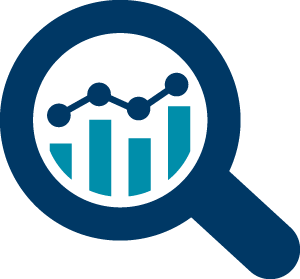
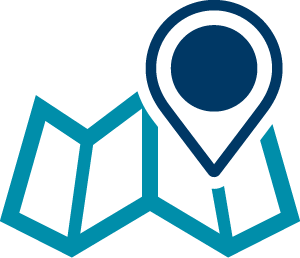


Launched road safety center to prevent crashes and save lives
In March 2024, the Minnesota Department of Public Safety Office of Traffic Safety (OTS) launched the Road Safety Information Center (RSIC) to enhance understanding of factors contributing to serious crashes on Minnesota roads. The RSIC is a mobile-friendly data analytics tool designed for both public and internal users. It offers real-time and historical data to identify crash patterns that will inform safety initiatives like education campaigns, road improvements and targeted enforcement. Users can export data for further analysis.
The public platform features an interactive map with crash data, road conditions, and traffic trends. This allows users to filter information by date, location, crash severity and driver behavior, such as distracted driving or speeding. Such capabilities empower residents to assess risks and make safer driving decisions.
The internal platform leverages machine learning to predict crash hotspots by severity. Traffic safety professionals, such as analysts and city planners, can access advanced filtering tools, GIS mapping, and additional data like MooveAI hard-braking patterns. A proof-of-concept feature estimates potential lives saved by adjusting emergency medical services (EMS) locations.
Funded through the TMF and National Highway Traffic Safety Administration (NHTSA), the project involves collaboration with MNIT and other technology partners for technical development. Traffic safety partners, including Toward Zero Deaths (TZD), provide valuable feedback to guide the project. Recent updates include new filters for pedestrian and cyclist data, and OTS plans to integrate court and health data for deeper traffic safety insights.
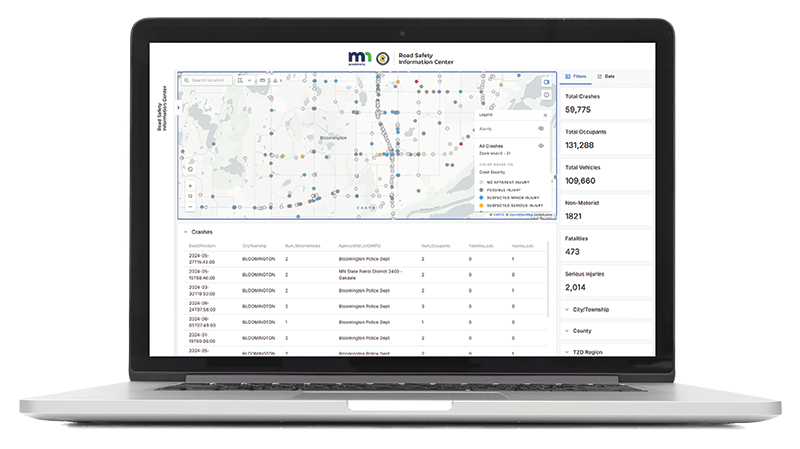
The more data we can use and process, the better we can adjust our approach with changing driver trends. That’s what’s driving us in the direction we need to go. That’s how we’re going to build the next generation of traffic safety solutions.
–Mike Hanson, Office of Traffic Safety Director
Automating payroll processes for efficiency
In 2024, MNIT partnered with MnDOT and MMB Statewide Payroll to implement automation for transitioning employees to Self-Service Time Entry (SSTE) as part of the Modernizing, Accounting, Reporting, Consumption, Unified Systems (MARCUS) project. The initiative streamlined a previously manual data entry process for updating employee records in SEMA4 during department transitions.
This modernization effort underscores MNIT’s commitment to efficiency, innovation, and delivering value to state agencies.

New online systems to enhance private well sampling
The Minnesota Pollution Control Agency (MPCA) launched an online system to give the public easy access to well-sampling information in areas where contamination may be a concern. This streamlined process helps protect public health by enabling communities to identify and address water quality risks more efficiently.
The initiative will enable residents to search online for areas of potential contamination and determine if their well might be affected. The system will manage communication and track well owner permissions. Once sampling is complete, the MPCA can work with residents to determine if treatment is necessary to reduce exposure to contaminants. With over 5,000 cleanup sites statewide, this project will have a wide-reaching impact. Previously, the process involved sending paper permission forms and waiting for a response by mail. The new online system allows the agency to receive information from well owners more quickly, accelerating the agency's response to potential contamination.
By improving data transfer and communication between the MPCA and residents, this new tool will support faster response and enhanced service to Minnesotans. This project demonstrates MPCA's commitment to protecting public health and the environment for all.

Using data to streamline agriculture credentials
Minnesotans soon will experience faster and more efficient services as the Minnesota Department of Agriculture (MDA) modernizes the process for issuing over 60 types of credentials — licenses, permits, certificates, and registrations — to more than 65,000 customers. By upgrading outdated systems, MDA improves customer service through streamlined electronic applications, payment options, and enhanced data management. This initiative also sets the stage for a future online customer portal, making it easier for residents to access the services they need.
With funding from the TMF, MDA worked with MNIT to implement a new platform for this upgrade. The team started by focusing on the Live Plant Dealer Nursery Certificate, which will go into effect on Jan. 1, 2025. This new credential had not been included in MDA's legacy systems, so the team built it from scratch, developing customer accounts, fee calculations, and e-payment functionality.
The project has provided valuable insights into managing complex credentialing processes, which include inspections for thousands of customers. It also has highlighted the importance of efficient internal processes for using the new platform and managing customer data. As this certificate replaces two older credentials, MDA can track progress and apply lessons learned to future e-licensing efforts, paving the way for continued improvements in service delivery.

Geospatial information coordination
The Minnesota Geospatial Information Office (MnGeo) coordinates geographic information systems (GIS) within the state, creating connections between state agencies and other partners from government and nongovernment organizations. Using geography to inform decisions and influence outcomes, shapes public safety, transportation planning, access to health services, the preservations of our natural resources, and much more. The Geospatial team manages the Minnesota Geospatial Commons, a collaborative public website where publishers can share, and users can access geospatial resources – data, maps, services, and applications. Over the past year, MnGeo used TMF funds to modernize its site, transitioning from a file-based system to a web service model and improving security.

37
Number of projects the office supports and hosts

48
Organizations sharing data on the Minnesota Geospatial Commons

25
Number of applications

1,039
Number of resources on the Minnesota Geospatial Commons

94,377,674
Number of hits on the geospatial image server
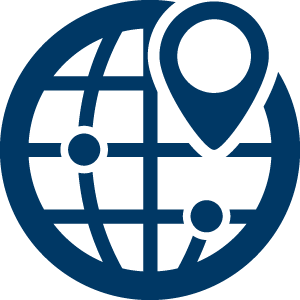
294
Number of services
Cybersecurity
Proactive defense in an evolving landscape
Cybersecurity is one of MNIT’s most essential responsibilities, and it works best when everyone collaborates—from individual citizens and local governments to state agencies and legislators. This unified effort protects the 35,000 system users and the private data of 5.7 million Minnesotans entrusted to the state.
Want to read more about cybersecurity at MNIT?
Collaborative efforts to help fortify the state against evolving cyber threats
MNIT collaborates with state agencies, local governments, and external partners to enhance the state's cybersecurity. These efforts range from large-scale projects that improve security tools for all Minnesotans to targeted initiatives like helping K-12 schools strengthen their cyber defenses. Our work focuses on:
- Sharing knowledge and best practices.
- Using data to guide decisions and optimize resources.
- Coordinating responses to emerging threats.
Engaging with local entities to build stronger defenses. By fostering collaboration, we improve the exchange of cybersecurity expertise and resources, creating a layered approach to safeguard Minnesotans' private data.
A quick, unified response to global outage
On Friday, July 19, 2024, a global IT outage caused by cybersecurity vendor CrowdStrike disrupted critical State of Minnesota operations, including call centers, state applications, websites, and networks. MNIT acted swiftly, prioritizing the restoration of essential systems and applications while collaborating with agency and vendor partners to resolve the issues. By 7 p.m., most systems were back online, and MNIT teams worked through the weekend to fully restore remaining servers and applications. To assist employees experiencing device issues, MNIT expanded virtual and in-person support statewide, earning appreciation for their prompt and accessible assistance.
Following the incident, MNIT conducted internal after-action reviews to identify lessons learned and refine response and recovery strategies. These improvements aim to strengthen MNIT's ability to address future challenges and enhance support for partners statewide, ensuring continued reliability of state operations.
Modern, single login solution for state services
From preschool tuition assistance to substance-misuse treatment reporting, Minnesotans count on easy, secure online access to government services. In 2025, MNIT will launch a modern solution to allow Minnesotans to create a single account through login.mn.gov for all public-facing state services.
The new solution will allow residents, vendors, businesses, and government employees to access multiple services quickly and easily with a single username and password. At the same time, the use of identity proofing and multi-factor authentication will address persistent and evolving cybersecurity threats, thereby increasing security and providing enhanced fraud detection capabilities.
The legislature supported and funded Minnesota's new solution, which also has the backing of the new Constituent Identity and Access Management Standard. This one-account solution will replace Minnesota Enterprise Identity Access Management (MNEIAM), an older service that provides access to data, records, and access to some government applications.
MNIT will begin onboarding teams to login.mn.gov in early 2025 and continue migrating additional teams throughout the process. By July 1, 2027, all state digital services requiring the public to share private data must use the enterprise solution.
New reporting law boosts cyber collaboration and response
Minnesota's new cybersecurity incident reporting requirement for public entities will help combat rising cyber threats targeting the public sector. This landmark legislation took effect Dec. 1, 2024, and mandates that public agencies report cybersecurity incidents that affect them to MNIT. The cybersecurity incident reporting law, which Governor Tim Walz signed in May 2024, underscores Minnesota's commitment to safeguarding data, systems, and networks.
MNIT and the Bureau of Criminal Apprehension (BCA) collaborated to create the new, secure reporting process. MNIT also shared the draft form and guidelines with 500+ public entities for comment to ensure we developed a user-friendly reporting tool. This feedback was included in the final versions of the form and instructions, which were officially published on MNIT's website on September 30, 2024. To ensure broad awareness and understanding before the law taking effect, MNIT conducted two informational webinars, which 200 public entities attended.
MNIT partners with the BCA, Minnesota Fusion Center (supported by the U.S. Department of Homeland Security), FBI, and other state and federal agencies on cybersecurity incidents that affect Minnesota and its public agencies. Having public entities report incidents to one source in a timely and consistent manner, allows MNIT and BCA to:
- Better respond to emergencies.
- Enhance cybersecurity coordination.
- Mitigate risks and respond to cybersecurity incidents more effectively.
- Identify trends and commonalities to anticipate and prevent future attacks.
- Strengthen communication and collaboration with public agencies.
The new law strengthens the state's collective cybersecurity posture and improves its overall resilience against evolving cyber-attacks.
Cyber planning strengthens protection of critical infrastructure
In 2024, MNIT collaborated with federal and state agencies, as well as, the Cybersecurity Task Force, to address cybersecurity vulnerabilities in Minnesota's water and wastewater systems (WWS). These critical systems are high-value targets for cybercriminals due to the potential disruption of safe drinking water and the significant costs a cyberattack could impose. In June 2024, Minnesota submitted a draft action plan to the White House, outlining efforts to strengthen cybersecurity and reduce risks to public safety.
As Minnesota's critical infrastructure is owned and operated by both public and private sectors, a shared responsibility to defend it has been a core focus. MNIT worked closely with state agencies involved in water and wastewater cybersecurity, including the Department of Health, the Pollution Control Agency, the Metropolitan Council, and Homeland Security and Emergency Management. This partnership drives initiatives to enhance cybersecurity and explore policy changes to protect the state's systems.
A key initiative launched in 2023, and strengthened throughout 2024, was the establishment of a cybersecurity coordination cell, a collaboration between the National Guard and MNIT. This cell supports local utility providers by offering resources to conduct cybersecurity self-assessments and interpret outcomes, helping to reduce risks.
Additionally, Minnesota's Cybersecurity Task Force, which includes members from local and Tribal governments, the private sector, and critical infrastructure, has been instrumental in advancing cybersecurity protections statewide. In 2024, a representative from rural water entities was appointed to the Task Force, enhancing coordination and cybersecurity risk reduction efforts. The Task Force's new critical infrastructure subcommittee will focus on water and wastewater cybersecurity threats and opportunities in 2025, further strengthening the state's cybersecurity posture.
New services to help state, local governments strengthen defenses
MNIT made great strides in strengthening the state's defenses against cybersecurity threats that increasingly target the public sector and have evolved into a major public safety risk. MNIT enhanced the state's cyber-resiliency to protect better the private data of the people we are trusted to serve.
MNIT implemented reliable, efficient, and effective technology solutions focusing on customer experience. The projects we completed, the goals we achieved, and the ongoing efforts we will focus on in 2025 contribute to strengthening the state's security posture. In addition to the projects described elsewhere in this report, we:
- Enhanced Whole-of-State Cybersecurity services. MNIT expanded the Cyber Navigator Team, a group of cybersecurity experts partnering with cities, counties, K-12 schools, critical infrastructure, and Tribal Nations. The team enhances communication, aligns resources with specific risks, and boosts statewide engagement. It leads outreach, builds new partnerships, strengthens existing ones, and provides guidance on improving cyber resiliency. Based on feedback from our Whole-of-State cybersecurity partners, we now offer three services, funded through grants, to help strengthen cybersecurity defenses at a subsidized cost.
- Managed Detection and Response is a 24/7 solution that looks for the types of attacks that could lead to data breaches, ransomware, or other major events and blocks those attacks.
- Internal Vulnerability Management Service uses enterpriseclass vulnerability assessment tools to continuously identify, assess, prioritize, and correct security vulnerabilities.
- External Vulnerability Management Service uses sophisticated tools to scan for vulnerabilities and to help entities remediate and reduce cybersecurity risks.
- Extended Web Application Firewall (WAF). MNIT extended WAF in front of public-facing applications to ensure Minnesotans are able to access the services they need securely. With the rise of digital services, the amount of digital data increases. Expanding WAF helps prevent bad actors from accessing sensitive data and records that may contain Personally Identifiable Information (PII) such as financial, medical, or any private data.
- Implemented an Always Verify framework. MNIT launched an Always Verify security approach, known as Zero Trust Architecture in the cybersecurity industry, that requires all users, whether in or outside the organization's network, to be authenticated, authorized, and continuously validated.
- Matured the Enterprise Vendor Risk Management Program. MNIT has fortified our vendor risk management program to assess and ensure third-party vendors are following best practices, have protocols in place, and comply with industry-standard controls to reduce the risk of cyber threats. In addition, vendors are now required to notify the agency they work with of a cybersecurity incident that affects that agency, under the new cybersecurity incident reporting law.
- Modernized governance, risk, and compliance. MNIT continues to review, update, and add standards and policies that address best practices of securing Minnesotans' data and state systems and networks.
- Proactively planned for election activity. Our multi-layered approach protected the infrastructure and networks that many of our local partners, the Secretary of State, and state agencies rely on. To prepare for, monitor, and respond to expected increases in cyber activity, we identified risks, created remediation plans, and collaborated with federal, state, and local partners to share realtime threat intelligence.
Agility
Empowering innovation and inclusion statewide
MNIT’s work fosters agility and supports innovation and inclusion across Minnesota. By streamlining processes and encouraging collaboration, MNIT delivers practical solutions that address the needs of residents and communities statewide.
Want to learn more about MNIT's innovation and inclusion efforts?
New workspace designed for collaboration and flexibility


This fall, MNIT ushered our workforce into the 21st century by unveiling its new workspace at the Stassen Building in St. Paul. Designed to enhance connection, creativity, and productivity, the new space creates the foundation to develop and support high performing teams with opportunities for meaningful collaboration.
The move to Stassen reduced MNIT's office footprint, aligning with sustainability goals while optimizing space usage. Flexible settings — such as collaboration spaces, focus rooms, ergonomic cubicles, and a quiet room — accommodate diverse work styles, supporting both teamwork and individual focus.
As MNIT embarks on this next chapter, the new workspace underscores our dedication to fostering innovation, collaboration, and supporting our most important resource — our employees.
Harnessing the potential of AI in state government
As AI technologies evolve quickly, the State of Minnesota has taken a proactive approach to explore and develop the environment for responsible adoption.
In 2024, the Transparent Artificial Intelligence Governance Alliance (TAIGA) continued its work to lay the foundation for the responsible adoption of AI across state agencies. TAIGA, aligned with the MNIT 2023-2027 Strategic Plan and the governor's One Minnesota Plan, focuses on ensuring that AI technologies enhance efficiency, equity, and service delivery while being used ethically and securely. TAIGA established a comprehensive AI usage policy and governance framework to guide the responsible deployment of AI across state operations.
A significant milestone in 2024 is the hiring of Minnesota's first AI director. This new position provides crucial leadership for AI efforts across state government and ensures AI adoption is responsible and aligned with broader organizational priorities. In addition, TAIGA formed an AI Champions team to support AI implementation at the agency level. The AI Champions team actively fosters an AI-focused community for sharing and learning.
With these efforts, TAIGA is creating the infrastructure necessary for the state to adopt AI technologies responsibly, prioritizing transparency, collaboration, and the protection of public trust.
Supporting Minnesota’s new Department of Children, Youth, and Families
In 2023, Governor Walz, Lieutenant Governor Flanagan, and legislative leaders passed legislation that began a journey from words in statute to the fully functioning Minnesota Department of Children, Youth, and Families agency. DCYF launched July 1, 2024, bringing together programs and staff that provide critical supports for children, youth, and families from across four existing state agencies: the Departments of Education, Health, Human Services, and Public Safety.
Why it matters
The work MNIT completed enabled the smooth transition of people and programs to DCYF.
Preventing service disruption was a priority. MNIT's goal was to ensure technology continuity during and after each of multiple transition dates. That meant successfully moving the data, applications, and IT equipment that the programs and staff used to the new DCYF infrastructure.
To succeed, a fresh people-centric focus on the needs of the new agency and their staff was imperative. This required coordination, collaboration, and trust.
Key highlights
- MNIT's goal: To ensure continuity during and after the transition to position staff to work toward the mission, vision, and goals of DCYF.
- We saw the positive impact of the collaborative partnerships, clear goals, and communications between MNIT, DHS, MDE, MDH, DPS as they carved out parts of programs, data, and people.
- Our cross-functional teams and linkages across each partnering agency broke complexity down into small, manageable chunks, allowing a speedier and more agile process to take root.
- Executive sponsors, legislative actions, and the overarching steering team cleared paths to meet data sharing agreements, and state and federal compliance requirements, allowing multiple workstreams to forge ahead quickly applying agile and waterfall methodologies.
Clear, frequent communication
- We collaborated with each transferring agency staff, the DCYF Implementation Office, workstreams, and the MNIT project team to develop, test, and validate the information we would share with the transferring staff.
- Transferring staff received regular informational emails during the month before their transfer.
- We created the online Transfer Hub, a SharePoint site with all the detailed information that transferring staff needed, including frequently asked questions to set expectations.
- IT Welcome Guides were tailored to the needs of staff transferring from each agency's specific environment and provided in document and online content formats. The guides covered what to do before and after their transfer.
- MNIT's support, project, and communications teams hosted office hours where we shared the IT Welcome Guides and answered questions.
A new MNIT agency-based team
A new agency also meant we needed to design a new agency-based office to provide IT support. Early on, we hosted monthly meetings for MNIT staff to provide transparency and tell the story of what we were doing. We focused on transparency, sharing what we did and didn't know.
A focus on customer experience
MNIT's solid disciplines of clear communication, project management, end-user support, and great customer service led to a positive customer experience. Processes and tools were refined and improved, resulting in a more mature, efficient playbook we will be able to use as more agencies are created in the future.
Hypercare support
MNIT created a specialized Hypercare team. Transferring staff had access to a dedicated phone line and online form, with immediate access to experts who were ready to provide specific support for workstations, phones, email, usernames, remote access, mobile devices, applications, and other technical support. Our priority was to make their Day One and beyond seamless and issue-free.
Advancing accessibility for Minnesotans
Minnesotans deserve equal access to public information and state services, regardless of ability. MNIT ensures that websites, applications, and content work with adaptive technologies, helping individuals with mobility, visual, auditory, or cognitive impairments access what they need.
Minnesotans benefit from the State of Minnesota's Accessibility Standard, which follows Section 508 of the Rehabilitation Act and Web Content Accessibility Guidelines (WCAG) 2.1. In 2024, a collaborative effort involving over 85 state agency employees created training and tools to ensure state resources meet these standards.
This work empowers Minnesotans to engage with state services confidently, knowing that web developers, content creators, and other professionals design resources with accessibility in mind. Visit MNIT's Accessibility and Policies webpage to learn more.
Legislative update: Driving innovation for a stronger digital future
The 2024 legislative session brought exciting milestones for MNIT and its state agency partners, paving the way for a more secure and innovative digital government. Through thoughtful collaboration and determination, MNIT worked closely with legislative leaders to champion key priorities.
By testifying before multiple committees, MNIT highlighted the urgent need to modernize state technology, strengthen cybersecurity, and explore the transformative potential of AI. These efforts resulted in meaningful advancements, including updates to MNIT's enabling statute, Chapter 16E, and a new requirement for public sector entities to report cybersecurity incidents. Both provisions, included in House File 5216, were passed on May 19, 2024.
Strong partnerships and advocacy efforts also helped secure critical investments in digital services:
- The Education and Children and Families bill (Chapter 115) provided foundational investments that begin advancing the state on a modernization journey for child welfare and the Social Services Information System (SSIS), used by DHS, counties, and Tribal Nations that will ensure more efficient and effective service delivery for vulnerable Minnesotans.
- The same bill allocated $2.7 million to the Public Educators Licensing Standards Board to enhance their Educators Online system and funded MNIT positions supporting DCYF.
As mentioned earlier in the report, MNIT began laying fundamental groundwork for the responsible adoption of AI to enhance government efficiency and improve services. Our efforts prioritize the responsible use of AI to streamline processes, support informed decisionmaking, and ensure equitable access to modern digital tools for all Minnesotans. In February, Commissioner Tomes testified before the Senate Tax Committee, outlining MNIT's vision for the role of AI in state government, as well as the safeguards in place to ensure the potential of AI can be realized while anticipating and mitigating its risk.
In July, MNIT responded quickly and effectively during a global outage to restore access to state systems when they were impacted by a faulty CrowdStrike systems update. MNIT's ability to rapidly assist teams across state agencies highlights one of the key benefits of IT consolidation. MNIT shared its response with the Legislative Committee on Cybersecurity, outlining the coordinated efforts across teams that helped minimize potential impacts. The consolidation of IT operations has enhanced Minnesota's cybersecurity efforts, allowing for a more unified approach to managing impacts to significant services and ensuring efficient resource deployment. This collaborative effort underscores the importance of a centralized IT structure in safeguarding state systems and protecting Minnesotans' data.
Looking ahead to the 2025 session, MNIT is committed to working with legislators to tackle critical government challenges through efficient and practical solutions. By prioritizing strategic technology investments and fostering strong partnerships, MNIT will focus on enhancing service delivery, fortifying cybersecurity, and modernizing outdated systems. This collaborative approach ensures we deliver the tools and systems needed to support a government that is efficient, responsive, and accountable to Minnesotans.
Councils and collaborations
In 2024, MNIT fostered strong partnerships with advisory groups, legislative leaders, state and local organizations, and Tribal Nations to maximize the impact of technology and deliver meaningful benefits to Minnesotans
Technology Advisory Council
The Technology Advisory Council (TAC) played a key role in strengthening the state’s strategic approach to IT initiatives. As a governor-appointed body, TAC’s subcommittees focused on critical priorities, including cybersecurity, project-to-product/agile practices, user experience/customer service, and AI, providing valuable recommendations. A newly formed working group will focus on opportunities related to data sharing in state government.
Cybersecurity Task Force
The Minnesota Cybersecurity Task Force led advancements in strengthening cybersecurity protections statewide under the guidance of the Whole-of-State Cybersecurity Plan. Comprising 15 members from county, city, town, and Tribal governments, as well as private sector IT experts, the task force focused on enhancing cybersecurity safeguards for Minnesotans. The task force also encouraged participation from interested legislators, fostering broad collaboration and inclusive discussions to ensure the effectiveness of the plan.
Geospatial Advisory Council
The Minnesota Geospatial Advisory Council (GAC) continued to lead efforts in coordinating the state’s geospatial community and advising MnGeo. The council focused on key priorities, including the development of statewide foundational geospatial datasets, remonumentation of the Public Land Survey System, and improving access to critical infrastructure information. Working across a broad network of counties, cities, universities, businesses, nonprofits, federal and state agencies, Tribal governments, and surveyors, the GAC ensured collaborative progress on these priorities to strengthen Minnesota’s geospatial infrastructure and support informed decision-making.
MNIT values our partnerships because they bring us together with different levels of government and the private sector to achieve common goals that benefit Minnesotans. MNIT’s partnerships are essential for maximizing the impact of public policies and services. When we combine resources, knowledge, and innovation from diverse groups, we create better opportunities and improve the quality, diversity, and speed of services that we provide Minnesotans. Together, MNIT and its partners address complex issues more effectively than we could on our own.
To learn more about MNIT's partners
Awards and recognition
Employee recognition

Cyber Security Visionary Leader
The Cyber Security Summit’s Visionary Leadership Awards recognize individuals who demonstrate exceptional leadership in cybersecurity. MNIT Information Security Director Chris Luhman received the Visionary Application Security Leader Award at the Cyber Security Summit on Oct. 29, 2024. This accolade recognized his innovative contributions to the field of application security and his leadership in advancing cybersecurity practices at MNIT.

Golden GOVIT Individual Leader Award
Cory Stubbendick, Chief Business Technology Officer at MNIT partnering with MDOR, received the 2024 Golden GOVIT Individual Leader Award. This prestigious award recognizes his significant contributions to modernize Minnesota’s digital infrastructure and enhance services for residents.
Annual Awards
As part of MNIT Week, MNIT employees celebrated their efforts to deliver outstanding IT services to Minnesota and the executive branch during the Annual Awards ceremony. The agency’s Employee Recognition Committee (ERC) recognized honorees and finalists for the Annual Awards.
Employee of the Year
Kimario Daniel Fawkes
Manager of the Year
Kristi Grunewald
Team of the Year
Whole-of-State Cybersecurity Team
Project of the Year
Blood Lead Modernization
Partner of the Year
Minnesota Management and Budget
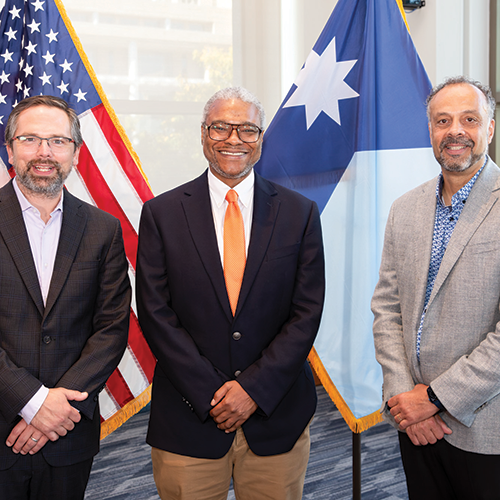
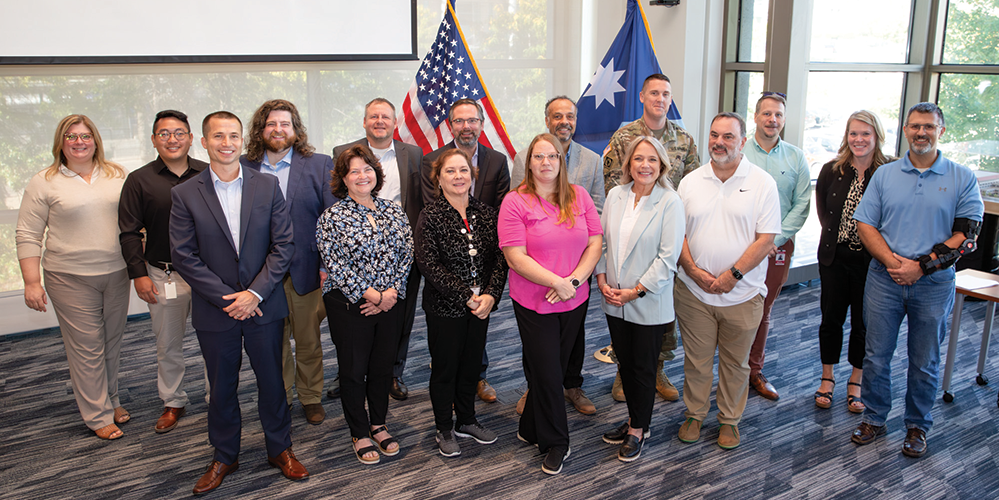
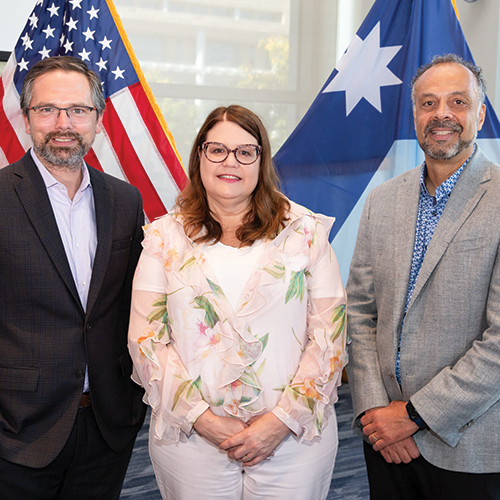

Agency awards
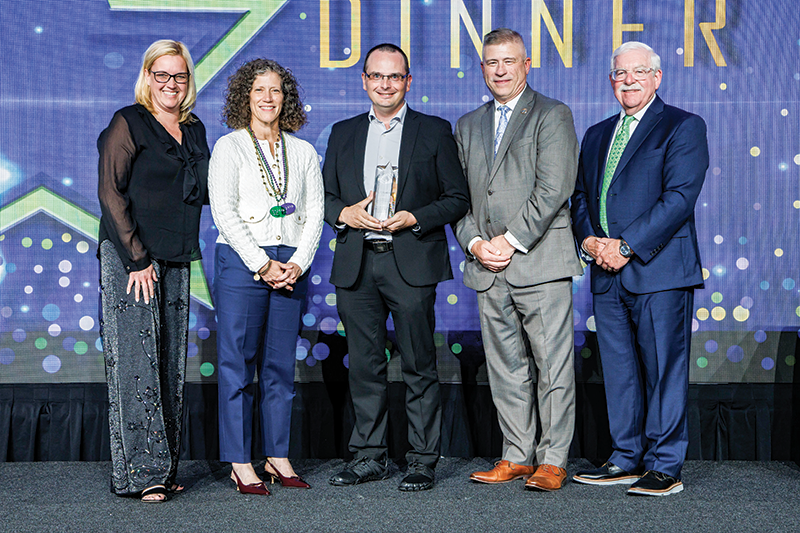
NASCIO
Minnesota brought home the top award in the cybersecurity category from the annual National Association of State Chief Information Officers (NASCIO) Conference:
Cyber Risk Quantification (CRQ)
Minnesota was recognized for its innovative “Turning Risk into Reward” project, which uses CRQ to assess and report cybersecurity risks in financial terms. This approach moves beyond traditional risk models, enabling MNIT to make cost-effective security investments that protect critical assets. The tool’s enterprise-wide application generates cost savings that benefit both state agencies and Minnesota residents.
Sustainability Achievement Award
The MNIT Green Team received the Sustainability Achievement Award for its efforts in sustainable procurement. This recognition highlights our agency’s commitment to environmental stewardship and our innovative approach to reducing waste and improving recycling. Our waste-free shipping changes have yielded impressive results, including:
- A 1.5-minute reduction in staff time per computer replacement (no longer needing to break down boxes, sort recycling, and manage waste).
- An estimated savings of five hours per week, or 260 hours per year.
- The ability to replace 500 additional computers per year without increasing staff.
- Reducing non-recyclable material waste from two 55-gallon garbage bins per week to two bins per month.
- Cutting cardboard waste from a 200-gallon container three times a week to one every other week.
The award, presented by the Enterprise Sustainability Steering Team, recognizes MNIT’s comprehensive strategy to enhance sustainability through strategic procurement changes across state agencies.
National States Geographic Information Council
Minnesota Geospatial Advisory Council’s (GAC) Public Land Survey System (PLSS) Legislative Subcommittee and Preservation Committees received the Catalyst Award from the National States Geographic Information Council in recognition of their leadership in securing over $9 million for Minnesota’s statewide PLSS Monument Grant Program. This funding supports the preservation and modernization of essential geospatial infrastructure, advancing data accuracy and decision-making statewide.

One Minnesota Implementation Efforts
In 2024, state agencies advanced the vision of the historic 2023 One Minnesota Budget. At the governor’s One Minnesota Implementation Champion Awards on Sept. 17, MNIT was recognized for its contributions in cybersecurity and customer experience, and as a finalist in several categories. Notably, MNIT’s partnership with the MnGeo and the Office of Cannabis Management on the Social Equity Applicant Map received special recognition. MNIT teams also played a key role in award-winning projects, including the launch of DCYF and the establishment of the Enterprise Translations Office.
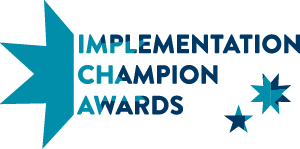
Tekne
MNIT received one award at the annual Tekne Awards, hosted by MnTech.
Minnesota Whole-of-State Cybersecurity Plan
MNIT was recognized for advancing the state’s cybersecurity posture through the holistic plan which MNIT and the Minnesota Cybersecurity Task Force launched in 2023. The initiative, which allocated $23.5 million in federal and state funding, strengthens cybersecurity across Minnesota by offering advanced tools, assessments, and collaboration with local governments.
